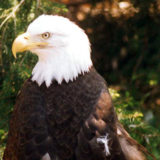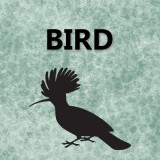RANGE
Georgia and Florida
HABITAT
Near water in sandy-soil, open woodland, especially areas of sabal palm, palmetto, pine and scrub oaks. Near canals and other water sources in orange and mango orchards and on farms.
SIZE
The shiny blue-black adults are 5 – 6 feet long, in some cases up to 9 feet long. The largest North American non-venomous snake.
LIFE EXPECTANCY
12 – 15 years or more in captivity. Record: 26 years.
DIET
Wild: Mice, rats, birds, frogs, lizards, young turtles, and other snakes. They will attack and eat venomous snakes.
Zoo: Rodents and chicks
REPRODUCTION
- Eastern Indigos mate from November to February. In April and may they lay 5–12 leathery eggs 3 – 4 inches long in rotted logs, and in mammal or gopher tortoise burrows.
- From late July to October the 19 – 26 inch long hatchlings appear. They are patterned with whitish bands.
- Indigos breed readily in captivity.
BEHAVIOR
- Indigo snakes are non-venomous.
- They are not constrictors but immobilize their prey with their toothed jaws.
- When disturbed the Indigo hisses, vibrates its tail and flattens its neck.
POINTS OF INTEREST
- They are vanishing from many areas because of habitat destruction due to urban sprawl, commercial collecting, and the practice of gassing gopher tortoise burrows.
- Indigos often hide in gopher tortoise burrows
STATUS
A threatened species. They are protected under Florida regulations.






